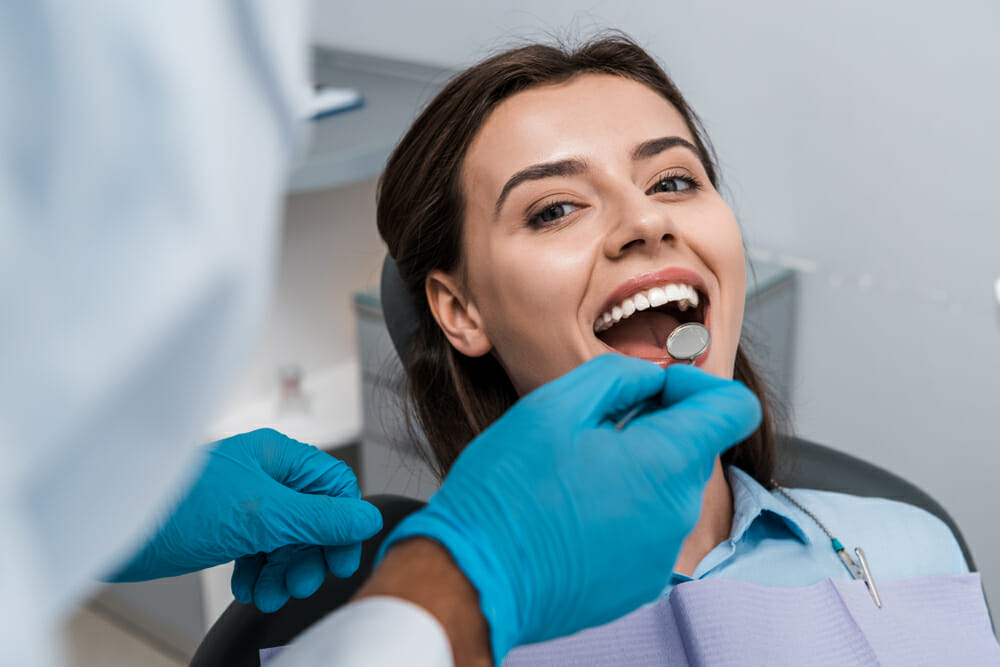The Basic Principles Of Legacy Orthodontics
The Basic Principles Of Legacy Orthodontics
Blog Article
The Best Guide To Legacy Orthodontics
Table of ContentsGet This Report on Legacy OrthodonticsLegacy Orthodontics for DummiesNot known Facts About Legacy OrthodonticsLegacy Orthodontics Things To Know Before You Get ThisSome Of Legacy Orthodontics
At Advanced Orthodontics, we offer individuals with a holistic treatment experience. Additionally, we offer adjustable therapy schedules, flexible settlement options and a fun, satisfying experience. orthodontist. Telephone call ( 480) 357-4900 today to learn more and routine a visit.An orthodontist is a dental practitioner trained to detect, avoid, and treat teeth and jaw abnormalities. Orthodontists work with individuals of all ages, from kids to adults.
Malocclusion, or misaligned teeth, can cause dental concerns, including dental cavity, periodontal disease, and hard or agonizing chewing. Not everybody is birthed with straight teeth. If you have a poor bite or huge areas in between your teeth, you may wish to consult a dentist focusing on orthodontic care.
Everything about Legacy Orthodontics
( Image Credit: DigitalVision/Getty Images) Orthodontists make use of fixed and detachable oral tools, like braces, retainers, and bands, to change the position of teeth in your mouth. Orthodontic treatment is for oral problems, including: Crooked teethBite problems, like an overbite or an underbiteCrowded teeth or teeth that are too far apartJaw misalignmentThe goal of orthodontic treatment is to improve your bite.
While you may believe of orthodontists as generally for youngsters or teenagers who require dental braces, they can correct dental problems at any age. Orthodontists attend university, oral institution, and orthodontic school.
, however not all dental practitioners are orthodontists. They concentrate on two locations: Exactly how to effectively and securely move teeth Just how to appropriately direct growth in the teeth, jaw, and faceOnce an orthodontist has actually finished training, they have the option to end up being board certified.
The smart Trick of Legacy Orthodontics That Nobody is Discussing
Imbalance, or malocclusion, is the most typical factor individuals see an orthodontist. It is genetic and is the result of size distinctions between the upper and lower jaw or between the jaw and teeth. Malocclusion results in tooth overcrowding, a twisted jaw, or uneven bite patterns. Malocclusion is normally treated with: Your orthodontist connects metal, ceramic, or plastic square bonds to your teeth.
If you have just small malocclusion, you might have the ability to make use of clear dental braces, called aligners, rather than typical braces (https://www.openstreetmap.org/user/legacyortho). Some individuals need a headgear to aid relocate teeth right into line with pressure from outside the mouth. After dental braces or aligners, you'll need to wear a retainer. A retainer is a personalized tool that keeps your teeth in location.
They can produce additional room in the mouth without having to draw teeth. Orthodontists use cords, surgical screws, or plates to sustain your jaw bone.
You may need to see an orthodontist if you have: Crowding or otherwise over at this website sufficient area for all of your teethOverbite, when your upper teeth come over your base teethUnderbite, when your base teeth are also much forwardSpacing or issues with gapsCrossbite, which is when your upper teeth fit behind your base teeth when your mouth is closedOpen bite or a vertical gap between your front bottom and upper teethMisplaced midline, when the center of your bottom and top teeth do not align Correcting an oral malocclusion can: Make attacking, eating, and talking easierImprove the balance of our face and your overall appearanceEase discomfort from temporomandibular joint disordersDifferent your teeth and make them much easier to clean, aiding prevent dental cavity or tooth cavities It's commonly a dental professional that first notices misaligned teeth during a routine test.
The Only Guide to Legacy Orthodontics

During your initial orthodontic consultation, you'll likely have: An oral examPhotos taken of your face and smileDental X-raysPanoramic (360 degree) X-rays of your face and headImpressions to create molds of your teethThese examinations will help your orthodontist recognize just how to wage your therapy. orthodontist. An orthodontist is a dental expert who's had training to treat your teeth and jaw
Orthodontists might perform surgical procedure, exams,X-rays,and even more to help you achieve an extra comfortable, much healthier smile. An orthodontist is concentrated on your bite, so something like a damaged tooth would certainly be handled by a dental expert. Orthodontists are dental professionals yet not all dental experts are orthodontists. Orthodontists are concentrated on your bite, or the way your teeth fit together, and the straightness of your teeth.
Ever questioned how stars constantly seem to have completely lined up teeth? The solution commonly lies in the skilled hands of an orthodontist. What exactly does an orthodontist do? Orthodontists are oral specialists who concentrate on correcting irregularities in the teeth and jaws. Their expertise goes past simply developing a stunning smile; it prolongs to improving your total oral wellness and function.
Top Guidelines Of Legacy Orthodontics

While dental braces are one of the most frequently recognized orthodontic therapy, orthodontists have a varied toolkit at their disposal. The certain approach chosen relies on the extent of the situation, the patient's age, and private choices. These tried-and-true braces utilize a system of braces bound to the teeth and connected by wires.
Clear aligners, like Invisalign, are a prominent option for people looking for a much more very discreet treatment choice. These detachable trays are custom-made to gradually change the teeth's setting. Headgear might be used in conjunction with braces or aligners to use added targeted pressures, especially for dealing with jaw disparities. In instances of slim jaws, palatal expanders can be utilized to develop room for correct tooth alignment.
Report this page